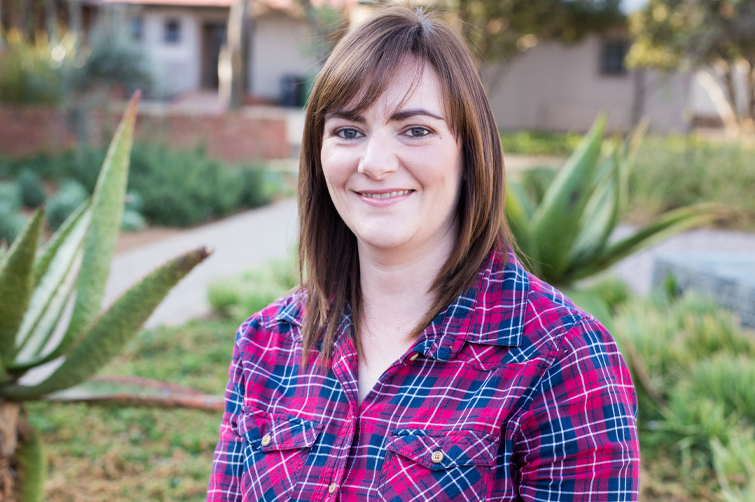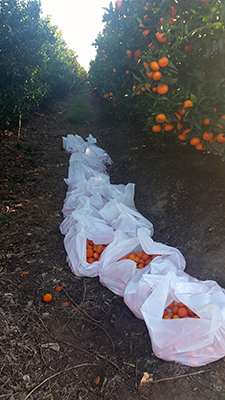Latest News Archive
Please select Category, Year, and then Month to display items
31 December 2019
|
Story Dr Cindé Greyling
|
Photo Anja Aucamp
 Dr Mariana Erasmus, SAENSE Platform Manager, says water remediation is vital for both the ecosystem and industries.
Dr Mariana Erasmus, SAENSE Platform Manager, says water remediation is vital for both the ecosystem and industries.
KovsieInnovation at the UFS supports innovative research outputs in various ways – one of which is to protect the intellectual property and to register patents where viable. This is in line with KovsieInnovation’s broader aim to create third-stream income for the university. Patent registration is a complex process and the UFS is proud to have the needed expertise to properly facilitate such an endeavour.
The SAENSE Platform
South Africa is a water-scarce country, with many water hungry industries (such as agriculture and mining). “Industrial processes often contaminate water with heavy metals, harmful chemicals, radioactive waste, and even organic sludge,” Dr Mariana Erasmus, SAENSE Platform Manager, explains.
Hence, water remediation is vital for both the ecosystem and industries. One of the key functions of the SAENSE Platform is to offer water-remedial solutions for the (bio)remediation of nitrates, heavy metals, and salts, among others. The platform’s activities and services are supported by undergraduate and postgraduate students and researchers, using Technology Innovation Agency (TIA) funding. TIA is a national public entity that serves as key institutional intervention to bridge the innovation chasm between research and development.
From waste to water
Through the joint effort of two mining companies and the UFS/TIA SAENSE Research Platform, a new treatment for mine drainage (MD) has been developed. This patented B-DAS (Barium – Dispersed Alkaline Substrate) technology effectively treats the major contaminants found in acid, alkaline, or neutral mining wastewater. The aim of the B-DAS system is to provide a passive water-treatment solution with minimum waste production; it can also be a potential pre-treatment for reverse osmosis (RO) to lower the requirements of the membranes and therefore potentially reduce the RO cost.
The success of the patent is that it turns unusable water into water that is fit for agricultural purposes at a reduced cost and increased efficiency.
Plant eco-physiologist finds effective solutions for crop optimisation
2016-07-24

The bio-stimulant was tested on
this citrus. This is the first time
that the product has been tested
on a crop.
In a time characterised by society facing increasing population growth, food crises, and extreme climatic conditions such as drought, it is essential for farmers to integrate science with their work practices in order to optimise crops.
Role of photosynthesis and plant sap data
By knowing how to use photosynthesis and plant sap data for determining plant health, fast and effective solutions could be established for the optimisation of crops. This technique, which could help farmers utilise every bit of usable land effectively, is the focus of Marguerite Westcott’s PhD study. She is a junior lecturer and plant eco-physiologist in die Department of Plant Sciences at the University of the Free State.
Westcott uses this technique in her studies to prove that a newly-developed bio-stimulant stimulates plants in order to metabolise water and other nutrients better, yielding increased crops as a result.
Agricultural and mining sectors benefit from research
The greatest part of these projects focuses on the agricultural sector. Westcott and a colleague, Dr Gert Marais, are researching the physiology of pecan and citrus trees in order to optimise the growth of these crops, thus minimising disease through biological methods. Field trials are being conducted in actively-producing orchards in the Hartswater and Patensie areas in conjunction with the South African Pecan Nut Producers Association (SAPPA) amongst others.
The principles that Westcott applies in her research are also used in combination with the bio-stimulant in other studies on disturbed soil, such as mine-dump material, for establishing plants in areas where they would not grow normally. This is an economical way for both the agricultural and mining sectors to improve nutrient absorption, stimulate growth, and contribute to the sustainable utilisation of the soil.

The bio-stimulant contributes to the immunity of the plants.
It was tested in these pecan nut orchards (Hartswater).
Soil rehabilitation key aspect in research projects
“One of two things is happening in my research projects. Either the soil is rehabilitated to bring about the optimal growth of a plant, or the plants are used to rehabilitate the soil,” says Westcott.
Data surveys for her PhD studies began in 2015. “This will be a long-term project in which seasonal data will be collected continuously. The first set of complete field data, together with pot trial data, will be completed after the current crop harvest,” says Westcott.